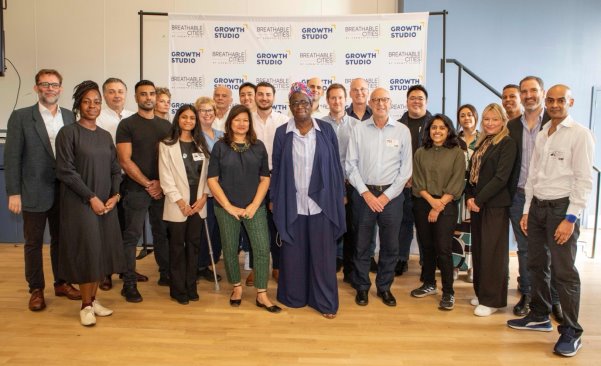Kleanbus Showcases Innovative Diesel Bus Electrification Solution at Breathable Cities Demo Day

Kleanbus, the bus repowering expert, proudly participated in the Breathable Cities Accelerator programme, where it unveiled its groundbreaking solution for rapidly electrifying diesel bus fleets and kickstarting the journey towards a cleaner and healthier future.
The Breathable Cities Accelerator programme, developed by Growth Studio and sponsored by Impact on Urban Health, culminated in a grand finale event, spotlighting the most promising startups in the realm of air pollution mitigation in the UK.
During the four-month programme, its mission has been to nurture startups dedicated to combatting air pollution, helping the development of world-class, scalable businesses with the potential to prevent or reduce air pollution in urban environments.
From over 400 applicants, just 11 exceptional air quality startups were chosen to join the Breathable Cities programme. These forward-thinking companies presented their innovative solutions and sought investments to combat the pressing issue of global air pollution.
Kleanbus introduced its pioneering repowering technology and demonstrated why replacing diesel engines with its advanced ‘ePowertrain Module’ solution for a fully electric powertrain represents the quickest and most cost-effective path to a zero-emission bus fleet.
With an efficient upcycling and testing process that takes less than two weeks per bus after the development of an initial prototype, Kleanbus’ solution minimises disruptions and reduces operating costs to a fraction of those associated with conventional buses. This makes it an ideal choice for fleet operators and local authorities seeking a swift and sustainable transition from diesel to electric buses, all without prohibitive costs.
Through the implementation of Kleanbus technology, fully electric bus fleets could become a reality six years sooner than solely relying on new electric buses, potentially saving over four million tonnes of CO2 and reducing emissions by up to 80% over a vehicle’s lifecycle.
The event served as an invaluable platform for investors and future leaders to gain exclusive insights into Kleanbus’ vision, strategy, and remarkable growth potential within the rapidly expanding electric bus market.
Joe Tighe, CEO of Kleanbus, said: “Our shared goal as a global community is to create clean air and healthier cities. We are immensely proud to present our cutting-edge technology and leading solution for decarbonising buses—a significant contributor to urban air pollution. Through repowering, we aim to assist operators and local authorities in achieving this goal in the quickest, most cost-effective, and sustainable manner possible. With initiatives like Breathable Cities, we are confident we can inspire decision-makers to make the right choices today for a better tomorrow.”
The Breathable Cities Demo Day was held at Elmgreen School in Tulse Hill, Lambeth, where it received support from London Deputy Mayor of Environment and Energy, Shirley Rodrigues, along with Rosamund Kissi Debra, and Chris Large from The Earthshot Prize. The choice of Elmgreen School as the venue was deliberate, as it not only did it provide a platform to showcase the startups in action to the schoolchildren and inspire the next generation, but the school itself has also made headlines for developing and deploying its own air quality monitoring system.
The school’s location is also where pilot projects are in progress in the London boroughs of Lambeth and Southwark, where Impact on Urban Health is testing solutions to combat urban health issues.
Paul Finch, Co-Founder Growth Studio & Co-Designer, Breathable Cities, commented: “We’re proud to have reached this milestone with Breathable Cities. We’re ready to help our startups pitch their innovations, deploying urgent air quality solutions. With the calibre of support we have secured already, this was an epic Demo Day.”






